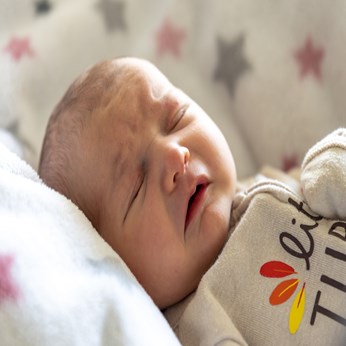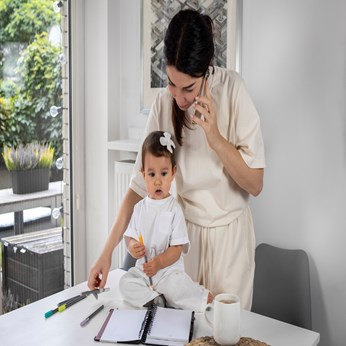The science of teething in babies
Motherhood is very delighting and challenging; it is best for mothers to learn all about the science of teething to avoid unnecessary tension as teething is one of the important milestones of a baby.
Teething does not happen suddenly, but gradually transforms from a gummy grin to gleaming teeth. By the age of 3 your child will have around 20 teeth that need regular brushing and you will have to help your child till he is 6 years.
You would be surprised to know that the teeth of a child start developing when he is in the womb; he develops tooth buds or milk teeth. Though a rare occurrence, some babies are born with a tooth or two or grow them in the first few weeks of life.
Most babies grow their first tooth when they are between 4 to 7 months. Some early developers develop their first bottom middle teeth as early as 3 months, while late bloomer cut one when they are a year or older. The last teeth are the second molars that appear in the back of the mouth at the top and bottom.Signs of teething:
Most babies feel very uncomfortable during the teething process. Some of the symptoms noticed are gum swelling and sensitivity, drooling with or without a facial rash, behavior of biting, irritability or fussiness, refusing food and sleeping problems. It is wrong to assume teething causes fever, vomiting or diarrhea; these and some of the worrisome symptoms require a call to the doctor.
Most babies get their 2 middle bottom teeth first, that is followed by the 2 middle teeth at the top, then the ones along the sides and back.
How you can help your baby in the teething process:
No parent can make the teeth appear in a baby, but can comfort him in the process.First you could offer your baby something like teething ring or a wet cloth cooled in a refrigerator. It is best to avoid storing teeters in the freezer as they turn too hard to cause damage to the baby’s gums.
Wash your hands and then massage his gums by rubbing them gently, but firmly with your finger; this could be a welcome pressure felt by your baby from the buried teeth below. Offer cold foods like applesauce or yogurt; they offer relief.
If you still are helpless, take the prescription from your doctor for a children's acetaminophen to ease the pain and inflammation.
Avoid over the counter teething medications like gels and creams for very young children as some topical numbing medications contain benzocaine that could cause methemoglobinemia, a serious and rare condition that brings down drastically the oxygen in the blood.
What if your baby doesn’t have teeth yet?
If you baby doesn’t have any teeth by the 18th month it is time you informed your baby’s doctor or dentist; it is also best to note here that premature babies are a few months behind getting their teeth.
Consultation with your child’s dentist or doctor is also necessary when he has heavy drooling, swollen gum and unusual pain; teething need not be an excruciating ordeal for a baby.
Brushing and other ways to look after a baby’s teeth:
As soon as your baby’s teeth are out, it is best to brush his teeth twice a day with a smear of toothpaste; fluoridated toothpaste should only be used with the consultation with a doctor or dentist. When your baby is 2, you can use toothpaste the size of a pea. When it becomes difficult to reach all surfaces of the tooth, it is best to go in for flossing with colorful flossing sticks meant especially for kids.

Your baby at 18 months gets ready to start learning to brush his teeth; you can help him as he may not have the dexterity or concentration to successfully maneuver a toothbrush. The main aim of brushing is not to brush in a particular direction, but to try to get the food particles out. Give the child toothpaste that he likes the taste of.
Avoid or minimize the sweets you give your child; if he must indulge brush his teeth soon after he eats.
Never put your baby to bed with a bottle of milk or breastfeed; it will make sugars sit in the baby’s mouth all night and lead to baby tooth decay or bottle rot.
Avoid tooth decay and cavities in your baby by changing your baby from bottle to cup around his first birthday. Try to avoid a sipper cup like a bottle as it also damages teeth with prolonged exposure to sugars.
Schedule your 6 month baby to a well-baby check-up to examine his teeth and also know if he needs a fluoride supplement; these drops are necessary where the water supply in your area isn't fluoridated.
Your baby’s dentist visit should also be around 1 year, when the dentist judges if the baby has the high risk of developing cavities; this visit should be done 6 months after the first tooth erupts or the first birthday, whichever is sooner.
Ultimately your child at 6 years starts losing his milk or baby teeth and permanent teeth take its place.
Image Courtesy: Google
Take the next step toward your goals
Share your requirement and find the best care providers in your area
-
Looking for a caretaker’s job? Build your profile and get in touch with families in your vicinity.
-
Discover nannies, babysitters, cooks, housekeepers, pet sitters, and elder care under one roof.
-
Get all the support you need to run a successful care center.
-
Search for appropriate centers near you depending on your needs.
Care Corner Insights: Blog Library

Overnight Babysitters in Bellevue, WA for Business-Travelling NRI Parents: Safety & Policies
For many NRI parents living in Bellevue, WA, frequent business trips are a reality. While traveling, one of the biggest concerns is ensuring your children are safe, cared for, and emotionally supported during overnight stays. Overnight babysitters ca

Indian Home-Style Cooks in Queens, NY: Tiffin-Style Weekly Meal Prep from Your Kitchen
Queens, NY, is home to one of the most diverse food cultures in the country, and Indian cuisine holds a special place among families looking for authentic, comforting meals. While restaurant takeout is convenient, nothing compares to the taste and nu

Baby Sleep Problems: What is Sleep Regression and How to Handle It
If you’re a parent, you know that baby sleep is one of the greatest mysteries of life. One day your little one is snoozing like an angel, and the next day they’re suddenly waking up every hour, fussing, or refusing to nap. Before you panic, there’s a

What is Validation Therapy? A New Approach to Dementia Care
Caring for loved ones with dementia is one of the most emotionally challenging journeys a family can face. Traditional methods often focus on correcting memory lapses or redirecting confused thoughts—but that can sometimes lead to frustration, stress

What is a Part-Time Nanny and Do You Need One
Parenting is a beautiful journey, but let’s be honest—it can also be exhausting! Between work deadlines, household chores, and family responsibilities, sometimes there just aren’t enough hours in a day. That’s where part-time nannies step in, offerin

Part-Time Housekeeper Hiring in Alpharetta, GA: Weekly Schedules, Pricing, and Must-Do Tasks
Keeping a home spotless while balancing work, family, and personal commitments can be overwhelming. For families and professionals in Alpharetta, GA, hiring a part-time housekeeper is one of the most practical solutions. Whether you need help once a

Affordable Daycares in Irving, TX with Indian Menu Options: Parent Reviews & Enrollment Tips
Finding the right daycare for your little one is never an easy decision—especially if you’re looking for one that fits your budget and offers familiar food options like an Indian-inspired menu. For parents in Irving, TX, the good news is that several

Can Babies Sleep on Their Side? Tips for Safe Baby Sleep
When it comes to newborns, every parent worries about the smallest details—how they sleep, what they wear, even which way they turn their tiny heads. One common question that pops up is: “Can babies sleep on their side?” The short answer? Not recom

8 Benefits of Hiring a House Cleaner for Your Home
Let’s be honest — keeping a home sparkling clean while juggling work, family, and daily life can feel like a full-time job in itself. That’s where professional house cleaners step in, turning the chaos into calm. If you’ve been debating whether to br

How to Care for a Gassy Baby? What’s Normal and what’s not – Expert Advice
If you’re a new parent navigating the world of burps, bubbles, and baby fussiness—welcome to the club! Gas in babies is incredibly common, especially in the first few months. But how do you know what’s normal and when it’s time to call in expert help